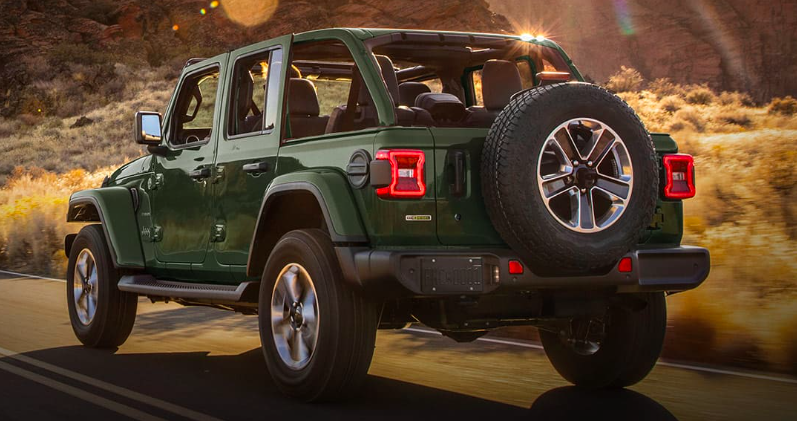
Maximizing Your Off-Road Adventures Jeep Performance with 26-Inch Wheels
For many off-road drivers, the enjoyment of driving on uneven landscapes and conquering nature’s difficulties is second to none. It’s about the challenge, the adventure, and the adrenaline. To maximize this experience, one often contemplates various vehicle modifications. Among these is the choice of wheels, with 26-inch wheels being a prevalent consideration. However, does upsizing your Jeep’s wheels to 26 inches genuinely optimize its performance? Let’s delve deep into the topic.
Understanding Wheel Sizes
Before diving into the specifics of 26-inch jeep wheels, it’s essential to understand the significance of wheel sizes in off-road performance. A wheel’s size can affect many aspects of a vehicle’s behavior, including:
Larger wheels can offer better stability, especially at higher speeds, and can provide better grip on certain terrains. A larger diameter can potentially elevate the vehicle, offering more clearance – a benefit in off-roading to avoid obstacles. Bigger wheels often mean more weight, which can reduce fuel efficiency and slow down acceleration.
Benefits of 26-inch Wheels on a Jeep
Enhanced Aesthetics
There’s no denying that big wheels can give your Jeep a distinctive and aggressive look. It stands out from the crowd and captures attention, especially if paired with a lift kit.
Improved Ground Clearance
Larger 26-inch jeep wheels can raise the axle, giving your Jeep better ground clearance. This can be crucial when navigating over boulders, logs, or deep ruts.
Better Vision for the Driver
The added height can offer the driver a better vantage point, helping them see obstacles and the trail ahead more clearly.
Challenges with 26-inch Wheels
Harsher Ride
Larger wheels with low-profile tires can often lead to a stiffer and harsher ride. You’ll feel more bumps, and the overall comfort might be compromised, especially on long off-road trips.
Heavier Wheel and Tire Combination
More massive wheels can add weight, potentially decreasing acceleration and braking performance. This added weight can strain the brakes and suspension components.
Potential for Damage
Low-profile tires on large wheels have less sidewall to absorb impacts. This means the wheels are more susceptible to damage from rocks, potholes, or other off-road obstacles.
Changes in Gear Ratios
Upsizing your wheels might throw off your Jeep’s gear ratios. You might need to re-gear to maintain performance, especially in off-road scenarios where torque and power distribution matter most.
Are 26-Inch Wheels Suitable for Off-Roading?
For hardcore off-road enthusiasts, smaller, wider wheels are typically preferred. This is because:
Flexibility, Weight Concerns and Damage Risk
Smaller wheels allow for tires with more sidewall, which can be aired down for better traction in sand, snow, or rock crawling scenarios. As previously mentioned, weight is a critical factor in off-roading. Lighter vehicles can navigate soft terrains like mud or sand more easily. The bigger the wheel, the less tire sidewall there is to absorb impacts. In aggressive off-roading scenarios, this can make larger wheels more susceptible to damage.
However, it’s essential to understand the kind of off-roading you’re interested in. If your adventures are more about dirt roads, trails, and occasional mild rock-crawling, 26-inch wheels might work. But for more aggressive terrains or specialized off-roading like dunes, mud pits, or extreme rock crawling, smaller, more robust wheels would be ideal.
Making the Most of 26-Inch Wheels
-
Your wheel is only as good as the tire wrapped around it. Invest in durable, off-road-specific tires with reinforced sidewalls. This will help mitigate some of the vulnerabilities of larger wheels.
-
A lift kit will give you additional ground clearance and ensure that the larger wheels and tires fit without any rubbing issues.
-
Larger wheels can throw off alignment and balance more quickly than standard sizes. Regularly check and correct these to ensure optimal performance and tire wear.
-
If you’re adding weight with bigger wheels, consider upgrading your brake system. Better brakes, rotors, and pads may give you the extra stopping force you might require.
Are 26-Inch Wheels the Best Option for You?
The choice to update the wheels on your Jeep to 26 inches depends on both your personal taste and how you plan to use them. The bigger wheels can be ideal if style is important to you and you occasionally go off-roading. However, the conventional wheel sizes (such 17-inch or 18-inch) with larger tire sidewall may be better appropriate for serious off-roaders who routinely traverse difficult landscapes.
Conclusion
Jeep automobiles are centered on customization. Every Jeep may be a distinctive representation of its owner, whether through color, trim, extras, or wheel size. Although 26-inch wheels have some drawbacks, they also have a unique aesthetic and particular performance advantages. Jeep owners may make sure that their vehicle is both a head-turner and a trail-conqueror by being aware of both the advantages and potential disadvantages, and by making extra modifications as necessary. There is no one-size-fits-all answer in the wide and diverse world of off-roading. Accept the challenge, play about with your setup, and most importantly, take it all in and relax!


